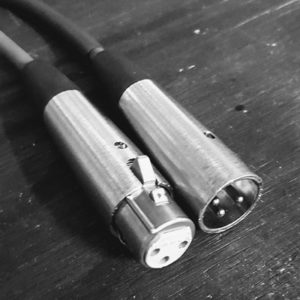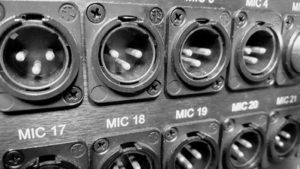A colleague of mine asked the other day what the acronym XLR stood for. We are both seasoned engineers with years of experience and I have probably plugged/unplugged at least one XLR cable every day of my life for the past 17 years. I was stumped. The last time I had even thought about it was maybe in college on some test or something but I did remember that it was an interesting story and there was no particular correlation between audio terminology and X-L-R. I had to rush home to the books to look it up and refresh my memory.

Today’s standard XLR connection
The term XLR is nothing more than the prefix of the product number for the Cannon cable connectors invented back in the 1950’s. The rarely used “X” series of cable connectors became
popular when Cannon added the latch mechanism that locked male and female plugs together hence the addition of the “L” in the product prefix. Later modifications to the design added Resilient plastic surrounding the female contacts for durability and the term “XLR” was born.
However it took nearly 2 decades for the design to become standard operation worldwide for both engineers and manufacturers. Many other renditions of the 3-pin connector were still popular throughout the 60’s and 70’s including “P” style and “UA” connections used by companies such as RCA and Neumann. Companies such as Switchcraft and Neutrik later started mass producing these connections and it finally stuck as an industry standard.

A couple other things that I find interesting is that the XL series established Pin 1 as shield/ground and also made the female Pin 1 slightly forward in it’s shell so that it would always make connection first and break last. It’s amazing how many renditions of connectors the industry had gone through to finally find a standard that worked.
